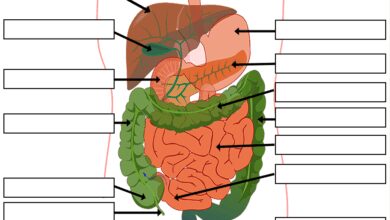System Crasher: 7 Shocking Truths You Must Know Now
Ever wondered what turns a smooth-running system into digital chaos? Meet the system crasher—silent, sneaky, and sometimes intentional. Let’s dive into the world where stability meets sabotage.
What Exactly Is a System Crasher?

The term system crasher might sound like something out of a cyberpunk novel, but it’s very real in today’s tech-driven world. A system crasher refers to any element—be it software, hardware, or human action—that causes a computing system to fail unexpectedly. This failure can range from a minor glitch to a complete system shutdown, rendering devices unusable.
Defining the Term in Technical Context
In computer science, a system crash occurs when an operating system (OS) or application stops functioning properly and abruptly terminates. A system crasher is the root cause behind such failures. It could be a faulty driver, corrupted memory, or even a malicious script designed to overload system resources.
- Crashes can occur at kernel level, affecting the entire OS.
- User-space applications can also act as system crashers if they exploit vulnerabilities.
- Not all crashes are permanent; some are recoverable through rebooting.
Types of System Crashers: Natural vs. Artificial
System crashers fall into two broad categories: natural and artificial. Natural crashers include hardware degradation, overheating, or power surges. Artificial ones, however, are often intentional—like malware or poorly written code designed to destabilize systems.
“A single line of malicious code can turn a stable server into a digital wasteland.” — Cybersecurity Expert, Dr. Lena Torres
Understanding this distinction helps in both prevention and response strategies.
Common Causes Behind System Crashes
Behind every system crash lies a trigger. While symptoms may look similar—blue screens, frozen interfaces, or unresponsive apps—the underlying causes vary widely. Identifying these is crucial for IT professionals and everyday users alike.
Software Bugs and Poorly Written Code
One of the most frequent culprits is buggy software. Developers sometimes release applications with unhandled exceptions or memory leaks. When these run on a system, they consume resources uncontrollably, eventually leading to a crash.
- Null pointer dereferences can cause immediate segmentation faults.
- Infinite loops eat up CPU cycles, freezing the system.
- Poor error handling fails to catch exceptions, leading to abrupt terminations.
For example, Microsoft’s infamous Blue Screen of Death (BSOD) often stems from driver-level software bugs.
Hardware Failures and Compatibility Issues
Even the best software can’t compensate for failing hardware. Faulty RAM, overheating CPUs, or damaged storage drives can all act as system crashers. Additionally, mismatched components—like using DDR4 RAM on a DDR3 motherboard—can lead to instability.
- RAM errors are detected via tools like MemTest86.
- Overheating triggers thermal throttling or automatic shutdowns.
- Power supply fluctuations can corrupt data during write operations.
According to a Backblaze report, HDDs have a 1-2% annual failure rate, making them a common source of system crashes.
The Role of Malware as a System Crasher
Not all system crashers are accidental. Many are deliberately engineered. Malware, short for malicious software, often acts as a silent system crasher by exploiting system weaknesses.
Ransomware and Its Destructive Impact
Ransomware doesn’t just encrypt files—it can destabilize entire operating systems. By locking critical system processes, it forces a reboot loop or renders the OS unbootable. The 2017 WannaCry attack affected over 200,000 computers across 150 countries, crashing hospital systems and factories alike.
- WannaCry exploited the EternalBlue vulnerability in Windows SMB protocol.
- It spread rapidly due to unpatched systems.
- Many victims experienced complete system lockouts.
Learn more about WannaCry’s impact at CISA’s official advisory.
Logic Bombs and Time-Based Triggers
A logic bomb is a piece of code intentionally inserted into a system that executes when certain conditions are met—like a specific date or user action. Once triggered, it can delete files, corrupt databases, or initiate a system crash.
“The danger of a logic bomb isn’t just in its payload, but in its stealth.” — Ethical Hacker, Marcus Reed
One famous case involved a disgruntled employee at a financial firm who set a logic bomb to erase trading data after his termination. The system crashed on schedule, causing millions in losses.
System Crasher in Gaming: Cheaters and Exploiters
The term system crasher has gained popularity in online gaming communities. Here, it refers to players or tools designed to crash game servers or opponents’ clients for competitive advantage.
How Game Exploits Trigger System Crashes
Some gamers use modified clients or scripts that send malformed packets to game servers. These packets exploit buffer overflow vulnerabilities, causing the server to allocate excessive memory and eventually crash.
- Buffer overflow attacks are common in older game engines.
- DDoS-style attacks flood servers with fake traffic.
- Memory spoofing tricks games into loading corrupted assets.
For instance, Minecraft servers have long battled against “crash exploits” where players send oversized chat messages to overload client memory.
Famous Cases in Multiplayer Games
In 2020, a vulnerability in Call of Duty: Warzone allowed players to crash others using a specific in-game audio file. The exploit spread rapidly, forcing Activision to issue an emergency patch.
- The exploit used a corrupted sound file to trigger memory leaks.
- Victims experienced instant disconnections or full system reboots.
- Community forums were flooded with reports within hours.
More details can be found in Activision’s support bulletin.
Preventing System Crashes: Best Practices
While not all system crashes can be avoided, many can be mitigated with proper planning and tools. Prevention is always better than recovery, especially in mission-critical environments.
Regular System Updates and Patch Management
Software vendors regularly release patches to fix known vulnerabilities. Delaying updates leaves systems exposed to known exploits that can act as system crashers.
- Enable automatic updates for OS and critical applications.
- Use centralized patch management tools in enterprise settings.
- Test patches in staging environments before deployment.
Microsoft’s Patch Tuesday is a prime example of scheduled vulnerability fixes that prevent widespread crashes.
Hardware Monitoring and Maintenance
Proactive hardware monitoring can detect issues before they escalate. Tools like HWMonitor or IPMI allow real-time tracking of temperature, voltage, and fan speeds.
- Set up alerts for abnormal temperature spikes.
- Replace aging components before failure.
- Use ECC RAM in servers to prevent memory corruption.
Google’s data centers use predictive analytics to replace hard drives before they fail, reducing unplanned downtime.
Detecting and Diagnosing a System Crasher
When a crash occurs, the next step is diagnosis. Identifying the true system crasher requires forensic analysis and the right tools.
Using Logs and Crash Dumps
Operating systems generate logs and memory dumps when a crash occurs. On Windows, the Blue Screen dump file (minidump) contains vital clues about the failing driver or process.
- Use WinDbg to analyze crash dump files.
- Check Event Viewer for error patterns before the crash.
- Look for repeated exceptions in application logs.
Linux systems use dmesg and /var/log/kern.log to track kernel-level issues.
Network Forensics for External Threats
If the system crasher is external—like a DDoS attack or remote exploit—network forensics becomes essential. Tools like Wireshark or Zeek can capture and analyze suspicious traffic.
- Identify IP addresses sending malformed packets.
- Detect unusual spikes in connection attempts.
- Correlate network events with system logs.
The SANS Institute offers free tools and training for network-based crash detection.
Legal and Ethical Implications of Being a System Crasher
Intentionally causing a system crash isn’t just unethical—it’s often illegal. Laws around cybercrime vary by country, but most penalize deliberate sabotage.
Cybercrime Laws and Penalties
In the U.S., the Computer Fraud and Abuse Act (CFAA) criminalizes unauthorized access and damage to computer systems. Those who deploy system crashers—like malware or DDoS tools—can face fines and imprisonment.
- Penalties range from fines to 10+ years in prison for severe cases.
- Even testing exploits without permission can be prosecuted.
- Corporate insiders are not exempt—many have been jailed for sabotage.
Learn more at DOJ’s CFAA page.
Ethical Hacking vs. Malicious Intent
Not all system crash testing is bad. Ethical hackers, or penetration testers, simulate crashes to improve security. The key difference? Permission and disclosure.
“Breaking systems to make them stronger is ethical hacking. Doing it for chaos is cybercrime.” — Security Consultant, Aisha Patel
Certifications like CEH (Certified Ethical Hacker) train professionals to identify system crashers without causing harm.
Future Trends: AI and Autonomous System Crashers
As technology evolves, so do system crashers. Artificial intelligence is now being used to both create and combat crashes.
AI-Powered Malware Evolution
Modern malware uses machine learning to adapt to environments. AI-driven system crashers can analyze a target’s behavior and strike at the most vulnerable moment—like when backup processes are running.
- Polymorphic viruses change their code to evade detection.
- AI can optimize DDoS attack timing for maximum impact.
- Self-learning exploits identify zero-day vulnerabilities faster than humans.
Research from MIT’s CSAIL shows AI can generate exploit code in minutes, posing new challenges.
Defensive AI: Predicting and Preventing Crashes
On the flip side, AI is also a powerful defense. Predictive analytics can flag anomalies before a crash occurs. Systems like IBM’s Watson AIOps analyze logs in real time to prevent outages.
- AI models learn normal behavior and detect deviations.
- Automated rollback systems restore stable states pre-crash.
- Self-healing networks reroute traffic during instability.
Explore IBM’s solution at IBM AIOps.
What is a system crasher?
A system crasher is any factor—software, hardware, or human action—that causes a computing system to fail unexpectedly. This can include bugs, malware, hardware failure, or intentional exploits.
Can a virus act as a system crasher?
Yes, many viruses and malware are designed to destabilize systems. Ransomware, logic bombs, and DDoS tools can all trigger crashes, either as a primary goal or side effect.
How do I protect my system from crashers?
Keep software updated, use antivirus tools, monitor hardware health, and avoid suspicious downloads. For organizations, implement firewalls, intrusion detection systems, and regular security audits.
Are system crashers always malicious?
No. While some are intentional, many system crashers result from accidental bugs, hardware wear, or configuration errors. The intent matters when assessing risk and response.
Can AI prevent system crashes?
Yes. AI-powered monitoring tools can detect anomalies, predict failures, and even initiate automatic recovery processes, significantly reducing downtime caused by system crashers.
Understanding the system crasher is key to building resilient digital environments. Whether it’s a faulty driver, a rogue hacker, or an AI-driven exploit, the threat is real and evolving. By combining technical knowledge, proactive maintenance, and ethical awareness, we can defend against both accidental and malicious crashes. The future of computing depends not just on innovation, but on stability—and that starts with knowing your enemy: the system crasher.
Further Reading:









